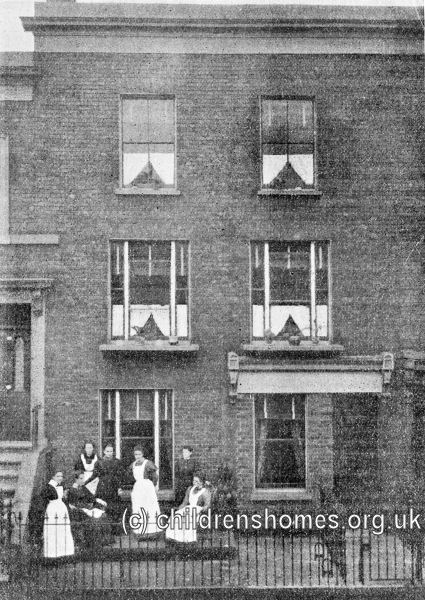The National Children's Home Story
Staff Training
From an early stage in the development of the Children's Home, the importance of staff training was recognised. In March 1873, the Home's Committee noted that two men and one woman had 'offered themselves to assist in the work of the Home, with a view to being trained for Christian labour, and have been accepted by the House Committee.' Amongst these recruits was Arthur Gregory who in 1900 succeeded Thomas Bowman Stephenson as the organisation's Principal. A training department was then set up at 84 Bonner Road.
By the end of the 1870s, it was decided that the mixed training of men and women was abandoned. At around the same time, a scheme was begun to train 'Sisters of the Children' who would look after the 'family groups' of children around which the homes were organised. At the outset, a number of 'old girls' of the Home were made into Probationer Sisters. Their training day included helping with the domestic work until 10am, exercise such as a walk in the park from 10-11am, then lessons until 1pm given by 'an educated lady' in a room allocated for the purpose.
The focus on women being at the heart of the children's work resulted from Stephenson's visits to various continental institutions such as the Deaconess's Institute at Kaiserwerth near Dusseldorf where unmarried women with a vocation for Christian service were trained as nurses. A noted graduate of Kaiserwerth was Florence Nightingale who spent four months there in 1851.
Soon after the training scheme was established, Stephenson began to appeal more widely for women with such a vocation to become Sisters. This could either be as Sisters of the Children (often shorted to just 'Sisters') or, in a wider evangelical missionary role, as Sisters of the People, or Deaconesses as they were more usually known.
A contribution of £500 by a Mr William Mewburn enabled the setting up of a Sister's training home, named Mewburn House, at 7 Agnes Terrace, later relocated to the Home's main site at 84 Bonner Road. Deaconess training moved to Ilkley, West Yorkshire, in 1902 with the opening of the Deaconesses Institute in the town. Stephenson, who had resigned as NCH Director in 1900, moved to Ilkley to become the Institute's first warden, a position he held until his retirment in 1907.
In 1898, Willard House, a property near to the Bonner Road home, became a training establishment specifically for Sisters of the Children. It accommodated seven students who, as well as running the house themselves, learnt cooking, washing, the making of children's clothes, and had studies in Bible knowledge, theology, and nursing. The trainees also spent time in the houses of the Children's Home and took charge when the Sisters were ill or had an afternoon off.

Willard House Deaconess Training Home, c.1899. © Peter Higginbotham
In 1935, the Sisters' training home moved to Stephenson Hall, a purpose-built facility at the NCH's administrative headquarters in Highbury Park, North London, and arguably the country's first childcare training college. The syllabus at Stephenson Hall included Bible Study, Child Study (Psychology), Child Guidance (Psychiatry), English, Principles of Social Work, First Aid and Home Nursing, Nature Study, Housewifery, Cookery and Dressmaking. There was also recreational instruction such as toy-making, keep-fit classes, and a Girl Guide Cadet Corps.
In 1946, the Princess Alice College, an establishment specifically for the training of Sisters, was opened at the Princess Alice Orphanage near Birmingham. It closed in 1960 and its function taken over by Stephenson Hall.
For many of the women who became Sisters, it was a lifetime's vocation. Some were also ordained Methodist ministers, amongst the last of these being Sister Eluned Williams (ordained 1957 and served at Birmingham, Alverstoke and Dinas Powis), Sister Peggy Greenway (1958, served at Painswick and Swansea) and Sister Nora Rolph (1962).
By the 1970s, however, the numbers of women coming forward to join the Sisterhood was in decline. For those wanting to work as childcare professionals, a much wider range of opportunities now existed, for example in local authority children's departments, which often offered better salaries and more flexible career paths. The number of traditional homes being run by the NCH was also falling. It seemed inevitable that the Sisterhood would eventually fold and in March 1985 a majority of the last eighteen serving sisters agreed to its closure.
Except where indicated, this page () © Peter Higginbotham. Contents may not be reproduced without permission.


